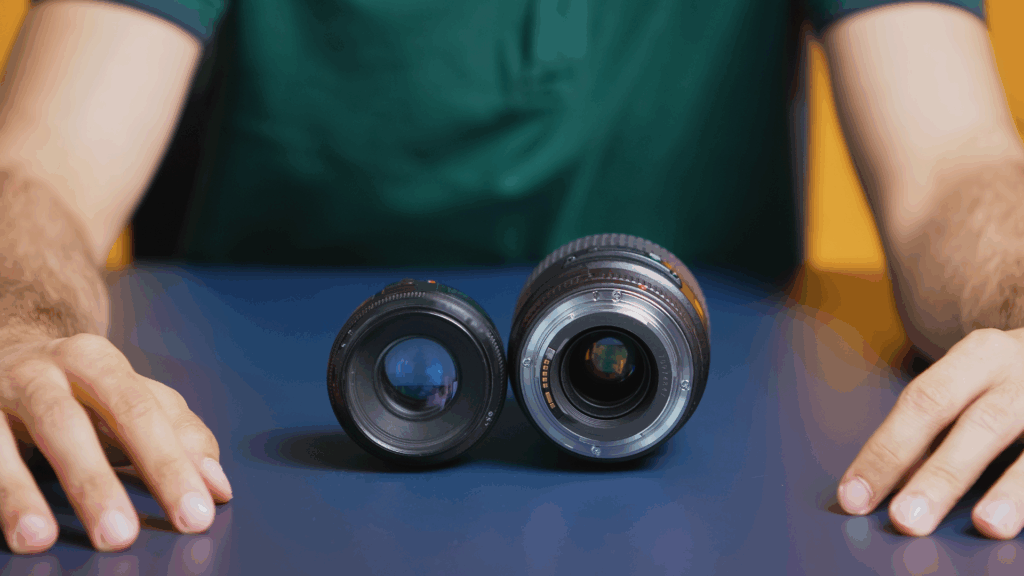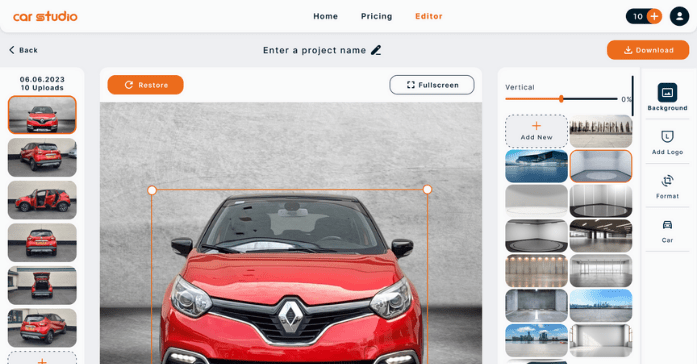Introduction: The Digital Showroom Starts with a Photo
In the fiercely competitive world of online car sales, a single image can mean the difference between a scroll-past and a click-through. Now, in the middle of 2025, car dealerships and marketplaces face a new dilemma: should they continue investing in traditional DSLR photography setups or pivot to fast, scalable, and tech-savvy AI-driven solutions?
We’ve entered an era where a vehicle’s first impression is no longer made in a showroom — it happens on a screen. And that means the camera, or perhaps the algorithm, behind your visuals matters more than ever.
The DSLR Legacy: Where Control Meets Craft
DSLRs have long been the go-to tool for professional automotive photographers. They offer unmatched image clarity, customizable settings, and a tactile sense of creative control.
Why DSLR Still Holds Ground:
- Visual Depth & Detail: A well-lit DSLR shot can capture the gleam of chrome, the stitching of a leather seat, or the grit of a tire tread like no other.
- Manual Precision: Skilled photographers can fine-tune lighting, angles, and aperture to suit brand identity or campaign goals.
- Aesthetic Storytelling: For brands that value emotional connection and luxury branding, the DSLR is more than a tool — it’s a storyteller.
But There’s a Catch:
- Time = Money: DSLR shoots are time-consuming, especially when scaled across large inventories.
- Talent-Dependent: Not every dealership can afford or access highly skilled photographers.
- High Operational Costs: Equipment upgrades, maintenance, and editing overheads add up — quickly.
For high-end listings or brand-building campaigns, DSLR still plays a role. But for volume-driven platforms and mid-tier dealerships, it’s becoming a luxury they can’t afford to scale.

The Rise of AI Photography: Automation with Aesthetic Intuition
Enter AI — not just as a buzzword, but as a practical solution reshaping the car photo industry. Platforms like Car Studio AI are pioneering tools that combine computer vision, generative rendering, and deep learning to automate what once took hours.
Why AI is Winning in 2025:
- Speed & Scalability: Upload 100 images, get back showroom-quality outputs — in minutes.
- Consistency Across Listings: No more inconsistent backgrounds or lighting errors. AI ensures a professional, branded look across your entire inventory.
- Smart Editing Features: Remove cluttered backgrounds, add realistic shadows, anonymize plates, or even change the setting (urban vs. studio vs. outdoors) — all with a few clicks.
- Cost-Effective Over Time: After initial setup, there’s little to no hardware cost, and edits don’t require a full-time design team.
Limitations Worth Considering:
- Creative Nuance: AI-generated photos can sometimes feel too clean, lacking the “soul” of a carefully composed DSLR shot.
- Dependence on Workflow Integration: A sudden server outage or poor integration with inventory systems can cause disruptions.
- Limited Artistic Direction: Custom photoshoots still offer more flexibility when a brand wants to break visual conventions.
Comparative Analysis: Which Leads to Better Sales?
Impact on Viewer Engagement
High-quality images are more likely to engage viewers and keep them interested in a listing. According to research, listings with professional-quality photos receive significantly more clicks compared to those with lower-quality images.
Efficiency and Scalability
For dealerships, the ability to quickly shoot and process images can be a game-changer. AI photography solutions significantly reduce the time needed to get listings online. For instance, features like 360 virtual spins and AI-enhanced edits ensure a faster turnaround, allowing dealers to update and manage listings more efficiently.
Cost Considerations
While the initial setup for a high-quality DSLR shoot can be costly, AI solutions also require investment in software and possibly in training staff to use new systems. However, the long-term benefits of AI, including reduced need for retakes and consistent quality, can translate into higher ROI.
Real-World Success Stories
Many dealerships have already begun to see the benefits of integrating AI into their photographic processes. For instance, dealers using AI solutions like those from Car Studio AI report quicker listing times and higher sales conversions compared to traditional methods.
Conclusion: Embracing the Future of Car Photography
As we look towards 2025, the choice between AI and DSLR for selling cars online will depend largely on your specific business needs and goals. For those valuing speed, consistency, and cost-effectiveness, AI offers compelling advantages. However, for shoots that require intricate detailing and creative input, DSLRs may still be the way to go.
For more insights on optimizing your car listings and embracing the latest in photographic technology, consider exploring further with Car Studio AI’s guide to professional car photography.

FAQ Section
1. What are the main benefits of using DSLR cameras for car photography?
DSLRs give you full creative control — from adjusting exposure to fine-tuning composition. If you’re working with high-end or custom cars and want every tiny detail (like leather textures or metallic flake paint) to shine, a DSLR is your best friend. It’s ideal when branding and visual storytelling matter deeply.
2. How does AI technology simplify the car photography process?
AI does the heavy lifting. From background removal to lighting correction, shadow creation, and plate anonymization — it automates what would normally take hours. This means faster workflows, especially when dealing with large inventories, and no need for a full-time editing team.
3. Can AI photography match the quality of DSLR images?
For most car listings, yes. AI-generated photos are now sharp, clean, and professional-looking — often indistinguishable from DSLR shots. However, if you need that creative “edge” or a signature aesthetic (especially for campaigns or premium vehicles), DSLR still holds an artistic advantage.
4. What is the cost difference between AI and DSLR photography?
Both can have high upfront costs, but AI becomes more cost-effective over time. It cuts out manual editing, reduces labor, and speeds up listing updates. DSLR setups involve gear, studio space, and skilled photographers — all of which add recurring costs.
5. How do I choose between AI and DSLR for my dealership?
It depends on your needs. If you’re listing hundreds of cars monthly and want speed + consistency, AI is a no-brainer. But if you’re selling luxury or custom vehicles where brand image is key, DSLR (or a hybrid model) might serve you better. It’s about what supports your business goals — efficiency, branding, or both.






